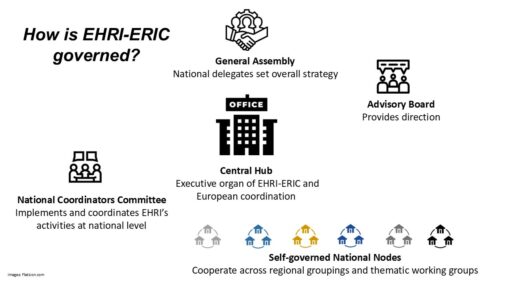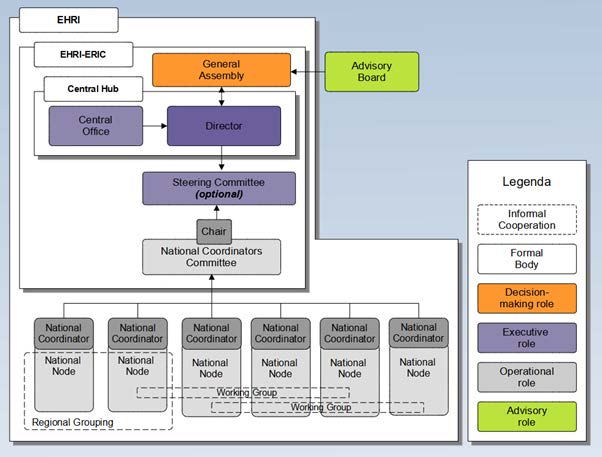Governance and Organisation

EHRI is implemented as a European Research Infrastructure Consortium (ERIC). An ERIC is a consortium of states (EU member states, associated countries and third countries). These states, represented by ministries or national research funds, are the Members and Observers of an ERIC and form its General Assembly, the decision-making body. Institutions situated in a country which is not a Member or Observer can opt to participate as a cooperating partner.
EHRI-ERIC is set up as a distributed research infrastructure, consisting of a Central Hub and linked National Nodes.
The Central Hub, which is located in the Netherlands at the NIOD Institute for War, Holocaust and Genocide Studies in Amsterdam, is the coordinating layer of the ERIC and will be represented by the Director, supported by a Central Office.
Each member or observer of the ERIC commits to set up a National Node, a consortium of research institutions, archives, museums, libraries and memory institutions with relevant expertise. These National Nodes advance EHRI’s mission at the national level. They are anchored in EHRI-ERIC’s governance through their representation in the National Coordinators Committee.
In order to guarantee high quality standards, an Advisory Board will monitor and evaluate the activities of EHRI-ERIC.
For more details, consult the EHRI-ERIC Statutes. Or read EHRI in a Nutshell.
The basic governance structure of EHRI-ERIC can be represented schematically as follows:

